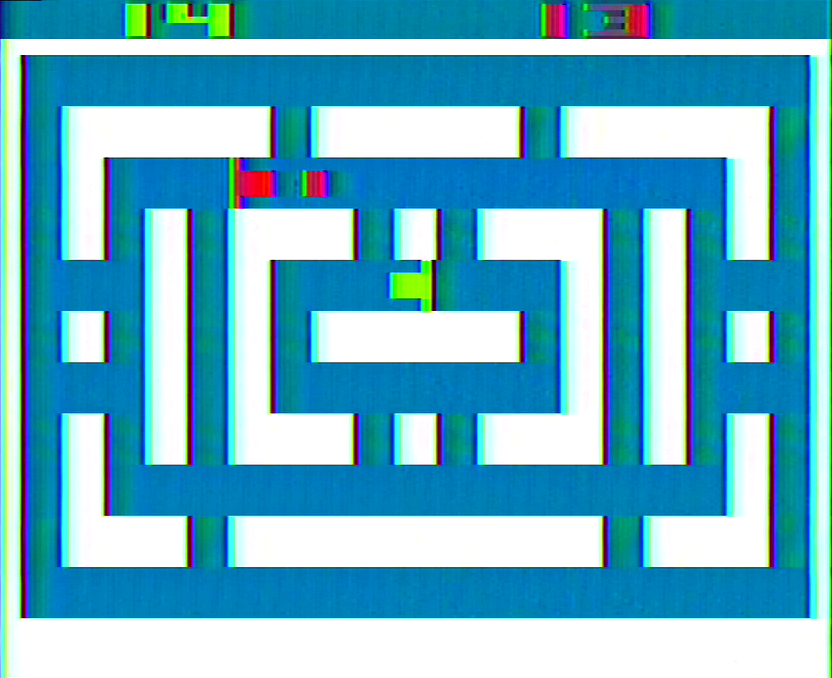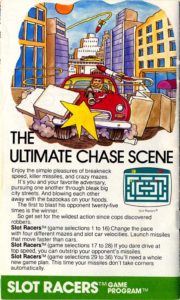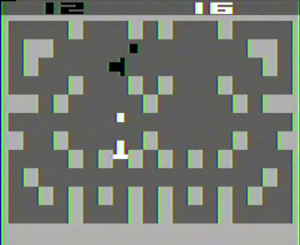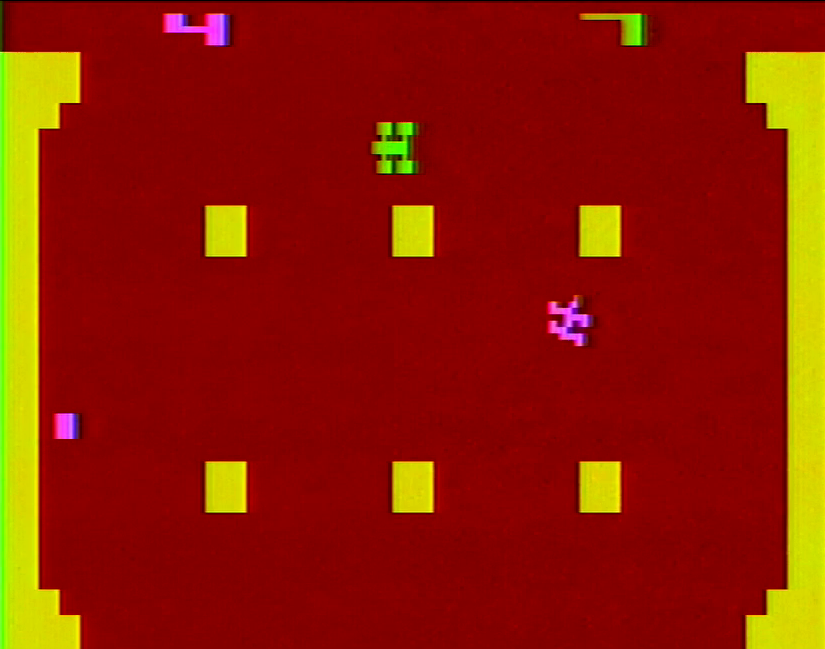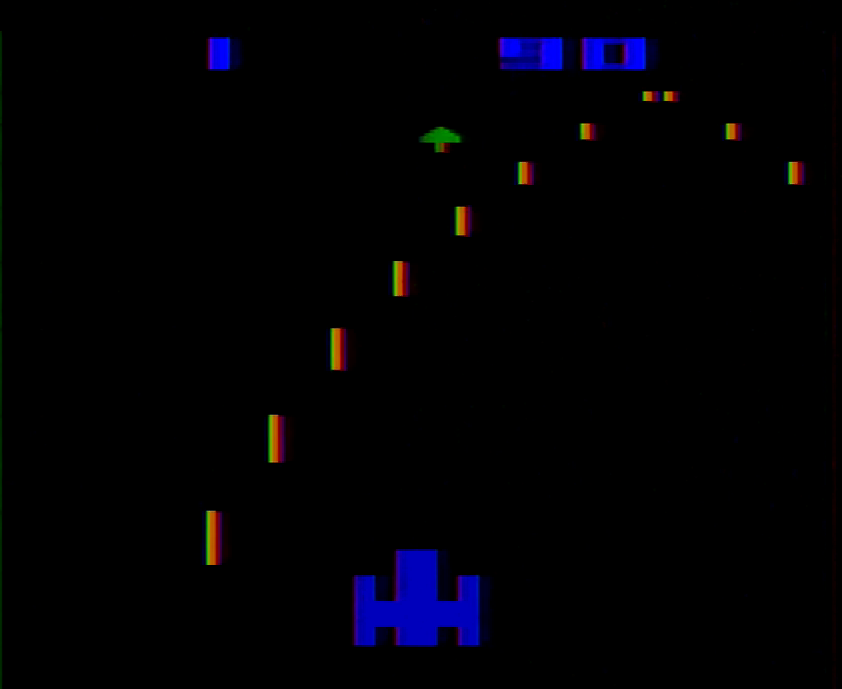
These days, nearly every racing game published is designed around the player’s viewpoint being either behind the car or in the driver’s seat itself. While Night Driver did not originate this perspective, it without question popularized it both in arcades and in Atari’s home conversion.
Yes, Night Driver is a return to the realm of first-party arcade conversions for Atari – something not seen since March 1979’s Canyon Bomber and Sky Diver ports. The VCS version is based off of the October 1976 arcade game of the same name, then nearly four years old by this point. But the technical marvel that was arcade Night Driver and its fast paced, first-person perspective is no less impressive in the scaled down VCS port, as a machine designed to play versions of Tank and Pong is once again pushed to new ground. But that same arcade game has something of a sordid history, as Atari and two of its arcade competitors practically lifted it wholesale from a German arcade game, Nürburgring 1.

